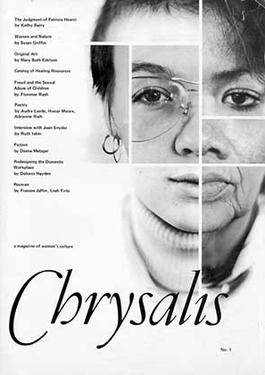
On Our Backs was the first women-run erotica magazine and the first magazine to feature lesbian erotica for a lesbian audience in the United States. It ran from 1984 to 2006.

The Delineator was an American women's magazine of the late 19th and early 20th centuries, founded by the Butterick Publishing Company in 1869 under the name The Metropolitan Monthly. Its name was changed in 1875. The magazine was published on a monthly basis in New York City. In November 1926, under the editorship of Mrs. William Brown Meloney, it absorbed The Designer, founded in 1887 and published by the Standard Fashion Company, a Butterick subsidiary.
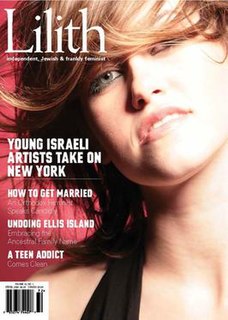
The magazine Lilith is an independent, Jewish-American, feminist non-profit publication that has been issued quarterly since 1976. The magazine features award-winning investigative reports, first-person accounts, entertainment reviews, fiction and poetry, art and photography. Topics include everything from rabbinic sexual misconduct, to new rituals and celebrations, to deconstructing the JAP stereotype, to understanding the Jewish stake in abortion rights.

The feminist art movement in the United States began in the early 1970s and sought to promote the study, creation, understanding and promotion of women's art. First-generation feminist artists include Judy Chicago, Miriam Schapiro, Suzanne Lacy, Judith Bernstein, Sheila de Bretteville, Mary Beth Edelson, Carolee Schneeman, Rachel Rosenthal, and many other women. They were part of the Feminist art movement in the United States in the early 1970s to develop feminist writing and art. The movement spread quickly through museum protests in both New York and Los Angeles, via an early network called W.E.B. that disseminated news of feminist art activities from 1971 to 1973 in a nationally circulated newsletter, and at conferences such as the West Coast Women's Artists Conference held at California Institute of the Arts and the Conference of Women in the Visual Arts, at the Corcoran School of Art in Washington, D.C..
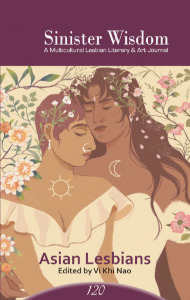
Sinister Wisdom is an American lesbian literary, theory, and art journal published quarterly in Berkeley, California. Started in 1976 by Catherine Nicholson and Harriet Ellenberger (Desmoines) in Charlotte, North Carolina, it is the longest established lesbian journal, with 105 issues as of 2017. Each journal covers topics pertaining to the lesbian experience including creative writing, poetry, literary criticism and feminist theory. Sinister Wisdom accepts submissions from novice to accredited writers and has featured the works of writers and artists such as Audre Lorde and Adrienne Rich. The journal has pioneered female publishing, working with female operated publishing companies such as Whole Women Press and Iowa City Women's Press. Sapphic Classics, a partnership between Sinister Wisdom and A Midsummer Night's Press, reprints classic lesbian works for contemporary audiences.

Cell 16 was a progressive feminist organization active in the United States from 1968 to 1973, known for its program of celibacy, separation from men, and self-defense training. The organization had a journal: No More Fun and Games. Considered too extreme by establishment media, the organization was painted as hard left vanguard.

HERESIES: A Feminist Publication on Art and Politics was a feminist journal that was produced from 1977 to 1993 by the New York-based Heresies Collective.

The Suffragist was a weekly newspaper published by the Congressional Union for Woman Suffrage in 1913 to advance the cause of women's suffrage. The publication was first envisioned as a small pamphlet by the Congressional Union (CU), a new affiliate of the National American Woman Suffrage Association (NAWSA), which in 1917 became the NWP. It evolved into an eight-page weekly tabloid newspaper when the first issue appeared on 15 November 1913.
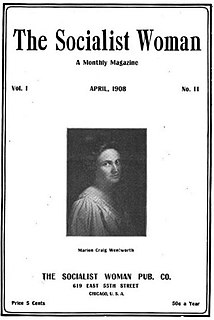
Josephine Conger-Kaneko was an American journalist and writer. She is best remembered as the editor of the magazines The Socialist Woman and Home Life.
Focus: A Journal for Lesbians was an American lesbian magazine that was published from 1970 to 1983.

The Woman Voter was a monthly suffragist journal published in New York City by the Woman Suffrage Party (WSP). It ran between 1910 and 1917. The first editor was Mary Ritter Beard. Beard created a suffragist publication which was unique in offering coverage of topics that "cut across class, age and organizational boundaries."
Jenni Sorkin is an American art historian, curator, and educator. She is best known for her writing in art criticism, and for highlighting work by feminist artists and artists working in fiber and associated crafts.

The Socialist Woman (1907–1914) was a monthly magazine edited by Josephine Conger-Kaneko. Its aim was to educate women about socialism by discussing women's issues from a socialist standpoint. It was renamed The Progressive Woman in 1909 and The Coming Nation in 1913. Its contributors included Socialist Party activist Kate Richards O'Hare, suffragist Alice Stone Blackwell, orator Eugene V. Debs, poet Ella Wheeler Wilcox, and other notable writers and activists.

Lavender Woman was a lesbian periodical produced in Chicago, Illinois, from 1971 to 1976. There were 26 issues, published irregularly. Lavender Woman was a collaborative newspaper aimed at voicing the concerns of many in the lesbian community, and also to be an outlet for those concerns. The strive for inclusiveness was important to the lesbian community as a way to combat their feelings of exclusion from the mainstream feminist movement.
Mary Alden Hopkins was an American journalist, essayist, and activist. She served as editor for several leading magazines and did freelance work for literary groups including The Atlantic Monthly, TheAmerican Mercury, and The New York Times magazine. Hopkins published polemical pieces in both mainstream and special-interest journals on labor reform, dress reform, birth control, pacifism, vegetarianism, and suffrage. Her creative writing was shaped by her politics as she wrote poems and novels about peace, women's suffrage, and other social issues.
The Pittsburgh Saturday Visiter [sic] was an abolitionist and women's rights paper printed in Pittsburgh. Founded in 1847, Jane Swisshelm was the editor and Robert M. Riddle printed the paper. It had good circulation numbers and ran until 1854.
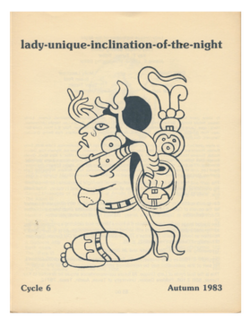
Lady-Unique-Inclination-of-the-Night was an American feminist periodical from 1976 until 1983. Founded and edited by Kay Turner, the journal primarily wrote on feminist art, history and performance with a particular focus on women's spirituality.
Maenad: A Women’s Literary Journal was an American feminist periodical published in Gloucester, Massachusetts in the early 1980s. The magazine's content primarily included feminist critical essays, visual arts, and creative writing. It also regularly featured book reviews, letters to the editors, and advertisements to other feminist publications such as HERESIES. Maenad ceased publication after a few years.
